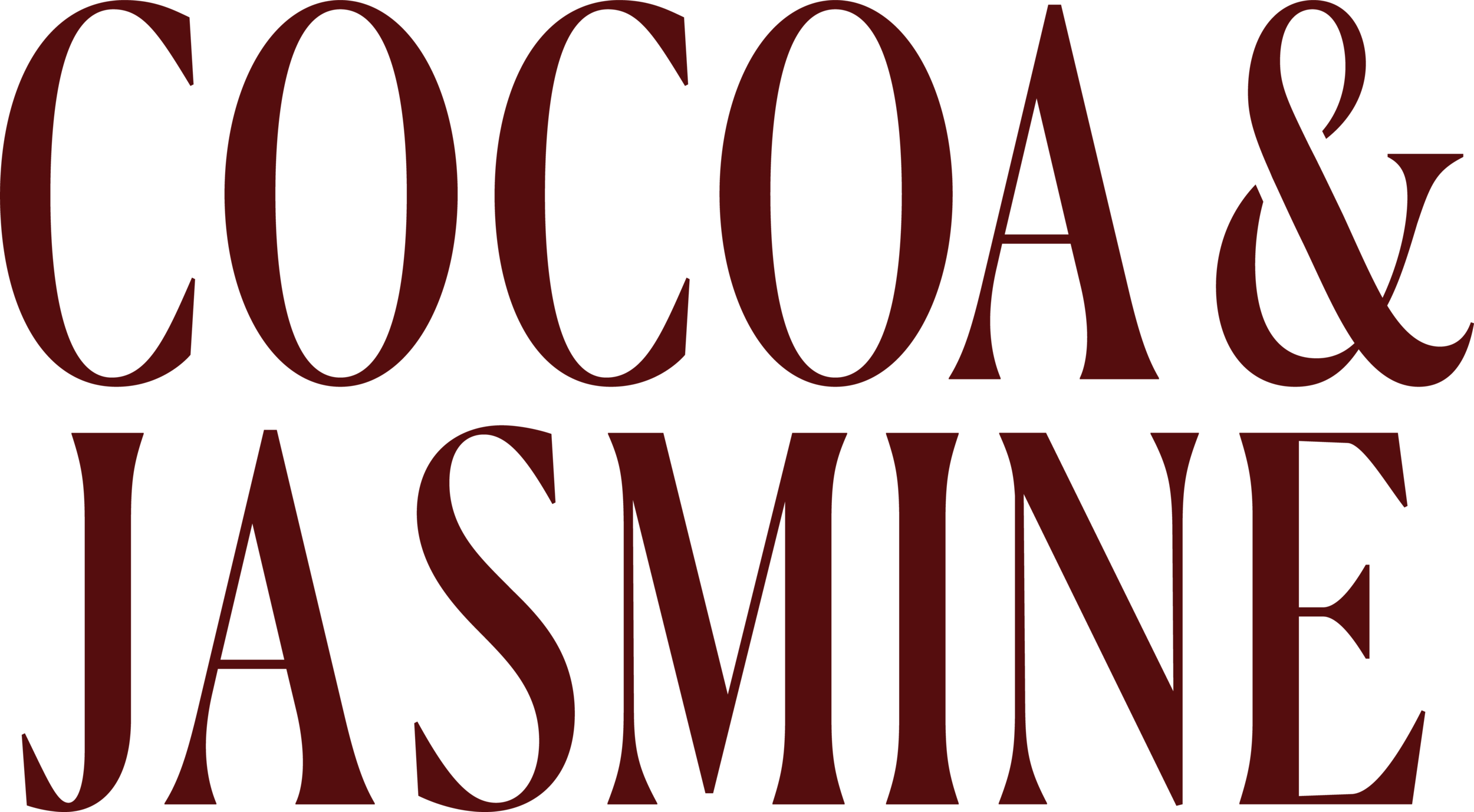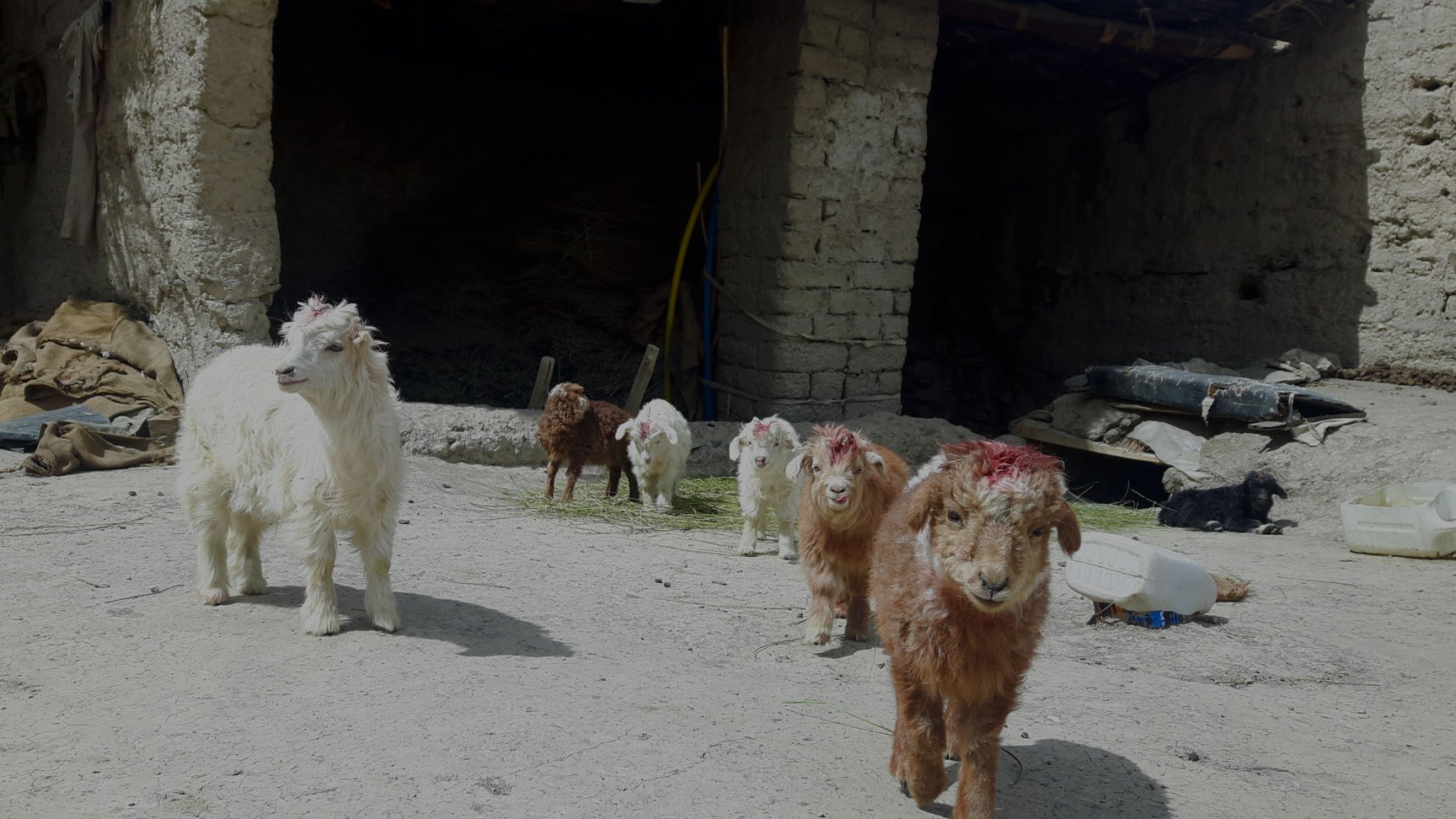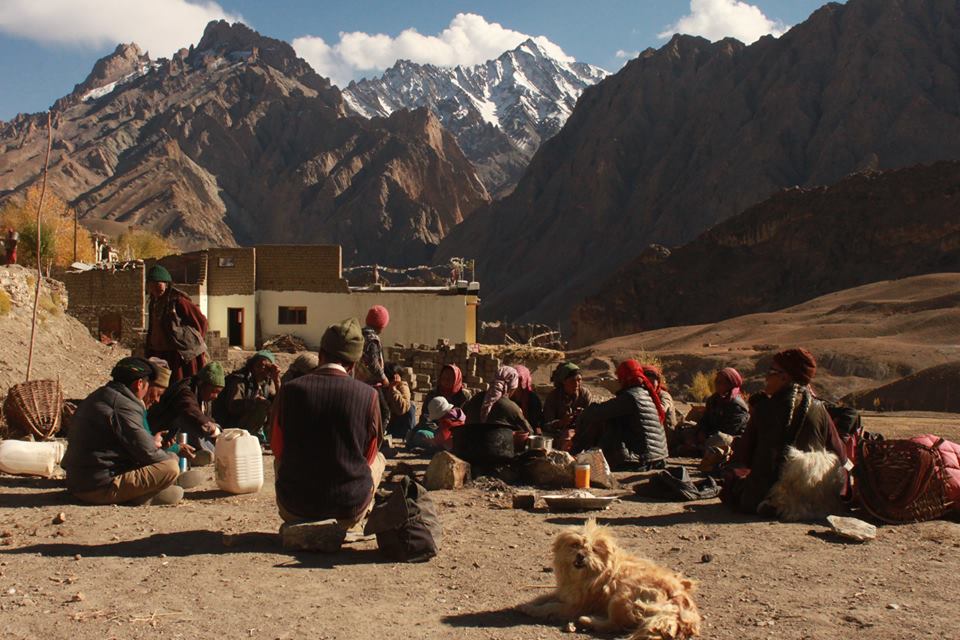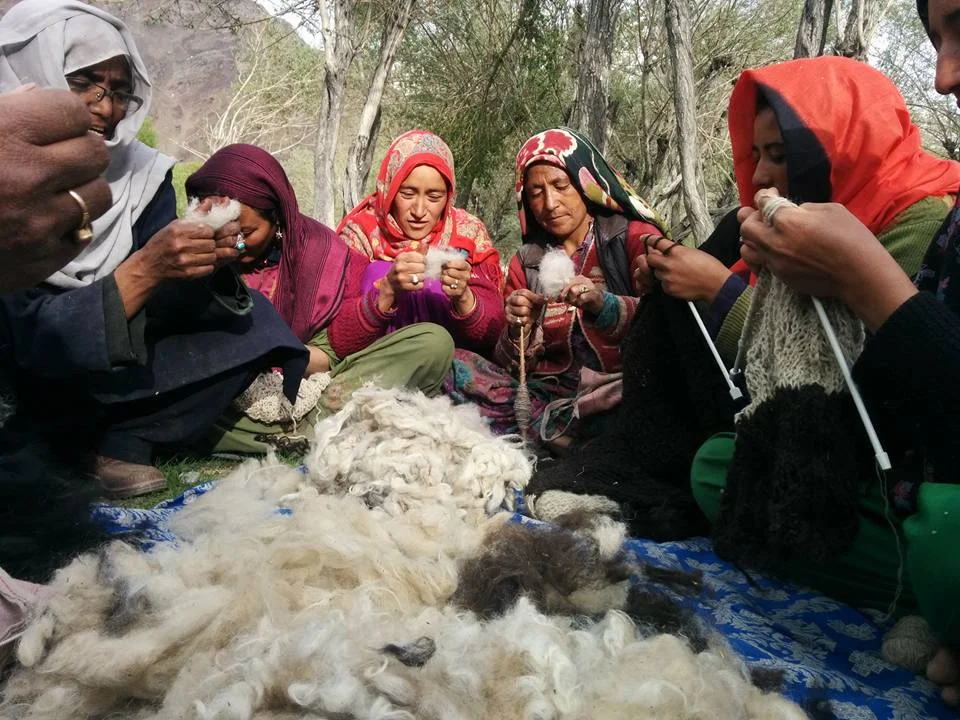The Story of Knots in Ladakh
Words and Photos by Sonal Chanana
We met in a tea stall in Balti Bazaar; Ache(elder sister) Angmo and I. “I heard you help the village women. Did you really stay in Rangdum Valley for a full winter?! By yourself?! Will you please come to Haniskot and help our women too? We will take care of you!” And so started our now six year relationship. Let me tell you something about Phunchok Angmo from Haniskot. She’s a powerhouse. Despite having a full-time job with the department of agriculture; she is actively engaged in community development.
Traditional wool processing techniques of ladakh are weaving and felting. Knitting was introduced by the Moravian(missionary) housewives in 1885. The ease of processing(portability, tools) and applications(socks, caps, sweaters etc.) made it popular in the region.
Big metal scissors are used for giving the sheep a haircut. This is usually done by the older men of the community outside the mudhomes; preferably when the sun is shining! It requires physical strength and assistance to hold down the animal so it ends up becoming a group activity more often than not. This process is called shearing and it takes about 1-2 hours to shear a sheep.
“Its so easy to knit. I can take my knitting along with me wherever I go…to the mountains for shepherding…to dinner parties…to the city when I go to meet my children in their schools…” explains Tsewang Dolkar.
With increasing connectivity and influx of tourism; textile craft is becoming more commercial.
The idea behind engaging in community crafts is very rudimentary to be honest; dignity of work!
“Craft has its own significance in different communities though “self-use” is the most prevalent.”
the knots process- an adaptive approach
Get in touch - get in feel – get in process – action – product – nurture local leadership –expand the collective
Mostly the work begins with an exploratory visit through some host agency – individual, NGO, or it may totally be on our own
identify area and craft
the area is identified on the basis of (remote)accessibility; resources; scarcity of population; (harsh)climatic conditions
introduction to community
as way of understanding requirements; a week long workshop is conducted. This time is spent understanding through observation and discussion the current standing of people and craft. Motivation to work, skill levels, attitude towards co workers
“The women, due to lack of education and connectivity are engaged in road construction activities and we’d like to slowly change that . Or atleast add to the avenues available to the women for income generation. ”
adapt to context
based on craft practiced a long term product development project is created and necessary information and tools are identified and collected
submersive co-creation
developing products keeping in mind the do’s and don’t’s of a community . Also, understanding the attitudes and aptitudes of individuals(towards craft) and adapting methodologies for each individuals separate growth needs.
We’d like to define sustainability to be inclusive of process, material, working conditions, social norms and keep evaluating and redefining the term to keep up with the changing times!
The collected wool is laid out on a sheet and beaten with wooden sticks to get the dry impurities like dust and grass out. The next step involves repeatedly combing the wool in bits till most of the impurities are removed. This is done with the help of a pair of flat metal-toothed brushes and is called carding.The clean wool is then spun by hand with the help of a phang(spindle). Yarn spun for weaving is thinner and with more twists than for knitting.
Craft has its own significance in different communities though “self-use” is the most prevalent. “Knitting is so economical, I can make sweaters, socks, caps for my children instead of having to buy them from the market; where they are so expensive!” exclaims Spaldon; mother of two.
The women, due to lack of education and connectivity are engaged in road construction activities and we’d like to slowly change that . Or atleast add to the avenues available to the women for income generation. Winters are long and mostly homebound; providing ample time and resources for wool processing. As the women grow older and it gets more difficult to work outside in the harsh summer sun; we’d like to provide a space in the comfort of their community to be able to work together and grow.
Follow Knotted wool here.
To participate write to us at sayali@cocoaandjasmine.com
The Craft Project wishes to document tangible anthropology i.e material culture of a place and comment on its relevance in the contemporary space. We also wish to bring together a community of cultural travelers and craft entrepreneurs and create a collective of common motivation. The Craft Project celebrates Diversity in culture through objects, folk arts, crafts, and design. Through this project, we will be conducting community-sourced primary research and publishing about crafts and will involve brands, NGOs, collectives, makers, designers, curators, thought leaders, other publications etc.














